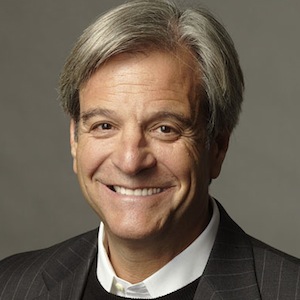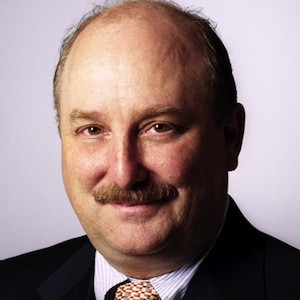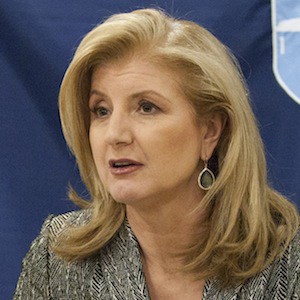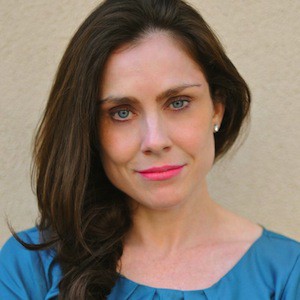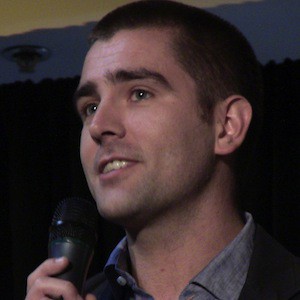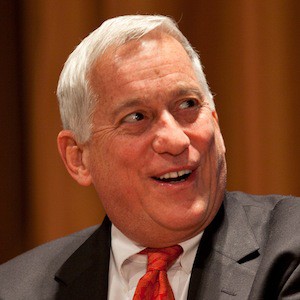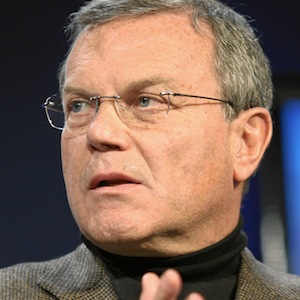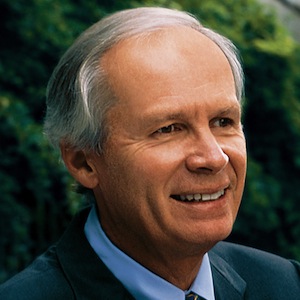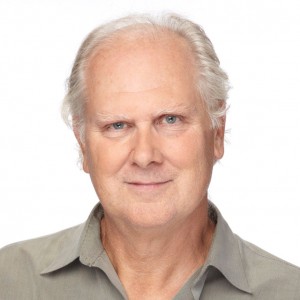Martin Nisenholtz: OK, let’s start by my saying that I’m at Forbes on March 7th, 2013, with Mike Perlis and Lewis Dvorkin. I just want to begin, and to the extent that you can make it as tight as possible, if you could just give us a little bio and tell us how you first met, your first time with digital journalism. Give us a five minute bio, a wonderful way to begin.
Mike Perlis: Want to start?
Lewis Dvorkin: No.
Mike: I come from a mostly magazine background. I started my own company in Camden, Maine, in the early 80s called “New England Publications.” We published “Canoe and Kayak” magazine, “The New England Guide,” “Maine Invites You” and a whole series of other print publications.
Interestingly enough, we also started a couple of machine specific computer magazines at that time for the Tandy Corporation. One was called Color Computer magazine and another was called Portable 100, which were designed for early branded PCs. In those days you really couldn’t understand and couldn’t use PCs unless you had a community. We created that community by publishing these magazines.
That’s back in the 80s. I moved from Maine, after being smitten with the magazine publishing business, to the real world of publishing by joining Rodale Press, where I helped start “Men’s Health” magazine, and “Women’s Health,” and “Quick and Healthy Cooking,” and also amassed what we called the Rodale Active Sport’s Network, which was “Runner’s World,” “Bicycling,” “Cross Country Skier,” “Backpacker.”
From there I went to…
These were relatively long stints, I’m getting older, but it sounds like I can’t keep a job. I went to IDG, because I really thought the technology space was heating up.
Martin: What year was that?
Mike: That was 1986 or 1987, 1987. I ran a division of IDG in Peterborough, New Hampshire, which specialized in publishing magazines, not unlike the magazines I’d created in Maine, that supported specific machines, specific operating systems. “Amiga World,” “Apple IIs,” a Commodore magazine called “Run,” a magazine called “PC Resources,” which was for Microsoft based operating systems.
It was a really interesting, very exciting time. It was the real beginnings of the PC era and early experience with desktop publishing, which was very much the future in those days. Machines like early Apples and the Amiga were the machines of choice there.
This will sound like a crazy confluence of events, but based on my youth and my experience at Rodale with men’s titles in the sport’s area, somehow I was recruited to be the president, at 36 or 37 years of age of “Playboy.” I moved to New York, and I became the first publisher of “Playboy Magazine” who wasn’t Hugh Hefner and was the president of the publishing group. I worked there for five years. It was a very different time in the world of Playboy.
Arts and Letters were of great importance there. Reporting, journalism, even humor and the interview, for sure, were real staples of the core magazine journalism community in those days. But I also, in that time, started Playboy.com. 1993, 1994. It was a very early — dial-up, like everything else, reflection of the Playboy media franchise, digitally.
From Playboy, after an interesting five years there where I accomplished a lot of what I wanted to do, but unhappily, was not able to surround Playboy with a group of other men’s magazines. A car magazine, health and fitness magazine, a consumer electronics magazine, creating a men’s publishing group. Mr. Hefner didn’t want to do that.
He wanted everything to be Playboy. I decided to move on. I went to work for Condé Nast for a couple of years, as the publisher and head of forming a men’s group at Condé Nast. GQ and Details were fundamentally the assets there. From there I began doing a few entrepreneurial things, but went to work at Ziff Davis, as the CEO of the publishing group, at Ziff Davis.
We sold the publishing group at Ziff Davis in 2000. SoftBank had been the fundamental backer and principal owner, even though it was a public company, of Ziff Davis. I went for 10 years, to work in venture capital, for SoftBank, at SoftBank Capital. During that period of time, half by design and half by luck and happenstance, really took a deep dive into digital content and digital publishing.
We invested in Belief Net, Associated Content and Huffington Post. And Buddy Media and BuzzFeed. I had the real pleasure and rare opportunity to have real access to the early days of all of those businesses. And lots of the business names that you wouldn’t recognize because they didn’t make it. but we had a very strong share of successes. And from that 10 year experience and during that period of time I came to know the Forbes family and was advising them, in many ways, based on my experience in the venture capital space.
With other digital content companies, helped design the early days of Forbes.com and its being separately operated from Forbes Magazine which, I think, was fundamentally a very important thing. In terms of…
Martin:: We’ll get into that.
Mike: Yeah. We’ll come back to it. But being a completely separate company allowed Forbes.com to develop in ways that other traditional media companies weren’t able to accomplish. I advised through that period of time. When I decided I wanted to get back into operating, two years ago, in the very beginning of 2011, it also coincided with it being the right time at Forbes to reunite the digital side of the business and the traditional side of the business.
In fact, it happened a little before I joined the company. That merged company was very appealing to me. It really merged my interested in traditional media and brand management and my experience in digital. So I became the first non-Forbes member to be the CEO of Forbes media. As part of that process I was introduced to Lewis Dvorkin, who had been on-board for six months as the chief product officer.
His company, he’ll talk about that . Had been acquired by Forbes and became the fundamental driving engine. Before deciding to join the company I had to make sure that I agreed this was the right engine and the right guy. Lewis and I had a fantastic lunch and really connected in a powerful way. I was able to match what I thought was a great business opportunity with a great business partnership.
We’ve been operating that way for more than two years.
Martin: That was great, thanks.
Mike: I’m sorry. Probably a little more than five minutes.
Martin: No. It was perfect.
Lewis Dvorkin: I’ve had this rather remarkably unplanned, orderly career. Through the different media businesses. I started out as a copy editor at a joint venture between DOW Jones and the Associated Press, where we took content from both operations and basically supplied that content to the banking industry or the petroleum industry. There were some, also, consumer pubs that would take that content.
That was my wire service world. From there, I moved on to “The New York Times,” which was a year after “Business Day” came to life.
Martin: What year was that?
Lewis: 1974. No, excuse me. It was 1978. I spent four years at “The Times,” where I was a copy editor for the Business Day section. By the time I left I was working with Soma Golden at the Sunday Business Section. I was running that with her. Between then, I was working as what then was called a back field editor, editing stories of the correspondents.
So a wire service, newspaper and then I went to Newsweek Magazine, from there. Which was one of the great experiences for me. I was the senior editor of the business section for four years. I’d spent four years at DOW Jones, four years at “The New York Times” and I spent four years at “Newsweek,” where I ran that section. And then was recruited by Norm Pearlstein, to come to “The Journal” and be the page one editor.
And did that for a bit. Then I moved on. I found myself in television. At that time, there was this very big deal that happened, called “The USA Today” television show, that started out immediately, with no pilot, with 100 syndicated stations around the country.
I went to work for, I think it was Tom Friedman. He was the star of “The Today Show” for quite a bit, and he moved onto this “USA Today” TV show. I worked there for about six months, but I actually was really recruited by a guy named Jim Bellows, who was a mentor of mine over time.
Martin: He did videotex for awhile.
Lewis: He did. But he was the great alternative editor around whether it was “The Star” or “LA Times.” He made his way around there. Then I wound up doing some things in between, but I wound up starting a magazine that was funded by “Newsweek.”
Which was my entry into the digital world. It was a magazine about what was then called cyberspace. It was a quarterly magazine with a modest little website, and it ran its course as most magazines do. It wasn’t successful at all.
I found myself at Forbes. Back at Forbes Jim Michaels called who I had met. He said why don’t you come here, and I spent four years here basically packaging cover stories, editing cover stories, and things like that. Then I got a call from a dear old friend named Jonathan Sacks who was working at AOL.
He said, we have a job for you down here, and I said why not. I packed up my stuff, and put my dog in a car, and we drove down to DC or Virginia. I spent eight years at a…
Martin: That was in 2000?
Lewis: 2000, which was…
Martin: Right after the Time Warner…
Lewis: I’ll never forget that because I remember listening on the radio in the bathroom that AOL had purchased Time Warner. I’m going what, you got to be kidding.
Literally three months later, I was working for AOL. It was March, 2000. I went on as the editor of what then was the welcome screen. Went on to run news and sports and entertainment, and run AOL.com, and helped re-launch…People forget that it didn’t quite work at first.
But I helped re-launch a little property called TMZ.com. I spent six months of my life in LA doing that, commuting back and forth.
Martin: Felt like six years.
Lewis: Felt like six years, but I learned a lot. Then I decided I wanted to start my own company. I had an idea about a new way to produce digital news. Actually, it happened right here in this room.
I was sitting here, Tim Forbes was sitting there, and Jonathan Miller was sitting right there. They had first met, and I had individually told them about my idea. They agreed right there to fund my idea. That’s how that worked.
I created the company. That was in May, June of 2008. We had some success.
Martin: What did the company do?
Lewis: The principal behind it was building a tool set of publishing tools and enabling journalists, academics, authors, people with knowledge and expertise to create content with our tools and to build individual brands and communities around their knowledge. To incentivize them by paying them on the size of their audience.
The bigger the audience, the more they made.
Martin: It was an About.com concept?
Lewis: It was not dissimilar. There were similarities to it for sure. A lot of what goes on in this business is similar, just an evolution of certain things. But the About.com was built more on a search kind of model. This was built more in the era of social media where people like that would find traffic in social media versus search.
Then two years later, Forbes bought the company. I became the Chief Product Officer. The team came in. Team, three of us, four of us including myself, and spread out throughout the organization. Pretty much Mike picked it up from there. After six months we were still moving.
Mike came in, and the story in the last two years has been very interesting.
Martin: OK, let’s start with a broad question about the long arc of this. Someone once said, “There’s the tide.” All the events and activities, technologies, that are affecting journalism. Then on the top of it there are the swimmers who are making the decisions, reacting to those events.
There’s some question now as to whether the swimmers were going to drown regardless of whether…
That the tide has been so strong, that the traditional approaches to journalism are just unsustainable inside of this. The other side says, “Well, no.” That certain decisions that have been made over the years have greatly affected the outcomes. Do you guys have a perspective on that? Do you think that if certain decisions had been made differently, particularly in the mid 90s time frame when a lot of this was being first developed, that things would be different today?
Mike: You asked a couple questions in there. But something that I think is worth exploring with us and other people that you talk to is, the decision seemed to have been taken by the industry in that time frame.
That content on the Internet should be free. If there was a time machine that we could get into and go back in time, and we could change one thing about the business. Who knows where this would take us. But I remember thinking at the time wow, MapQuest.
I would pay $1.00 a month for MapQuest. I was using it all the time, it magically took me from one place to another, gave me a map of anywhere on earth. They were giving it to me for free. There were dozens of companies like that there were venture backed, venture funding.
They had unreal business models because the money came not from people buying the service, but from investors. If pay walls, as we’ve come to know them today or for-pay, consumers paying for products, had been more the culture of the early days, there would be a different set of economics associated with the Internet today, and it would be very different.
Martin: That’s very interesting. Just to reflect on it for a moment, as we’ve talked to people, there are two things that surfaced during that period. The first was that…We spoke to Dave Graves, who did the Yahoo deal on behalf of Reuters.
Reuters, instead of going retail. It was a wholesaler, licensed its wire service to Yahoo, and Yahoo basically ran with it in a free context. It pretty much instantly became the largest news service on the Web, and I believe that it still is, in terms of users.
CNN, which had no history outside of…
Obviously, you pay for cable, but CNN? CNN.com comes up, and I don’t think there was any thought inside of CNN. We haven’t yet drilled into that to charge for the service, because they weren’t charging for their television service, except through the cable operator.
How…
Mike: That’s a big “except.”
Martin: Well, yes, but they’re not retailers either. My only point is this is where the tide comes in. The collision of these forces, in 1994, 5, 6, are occurring.
I’d like to just drill a little into that, in that context. Do you think, if all of those people had said, “Jeez, our content is worth something. We should be charging the user for it…”
Mike: It’s such a complex issue. I don’t want to trivialize it. I chose a very narrow, specific example with MapQuest, which is very different than CNN or Yahoo. It’s a service that had immediate and real value, and it was given away for free.
The idea was, remember all the conversations which you’ll hear from everyone. “If you build it, we’ll figure out the business model. Get the eyeballs. Get people to come.” It was all built on an advertising-funded bias.
You have to talk about the small, very service-oriented businesses that provided a valuable service in the moment for people that they would have been glad to pay for. That’s at one end of the spectrum.
Huge sites like CNN and Yahoo were different, but I think…No one was thinking way out into the future about diversifying revenue streams, and all the various things that we think about very hard today.
Martin: Right. Do you have a perspective on that, Lewis, or…?
Lewis: On that part?
Martin: No?
Lewis: The other side of that is what content was considered. That has in some ways slowed things down from happening earlier, that when those decisions were made, that all of a sudden there would be digital content, it was viewed that it’s going to be exactly the same. Just put the print content. Put the magazine content. Digital content equals print content.
Well, that set in motion a period of time that was how newsrooms were structured and whatnot, and actually more importantly, what wasn’t being done to create the kind of content that actually was right for the medium.
Martin: You guys are really hitting on…I mean, you’ve hit the first two points perfectly. It’s great. That’s the other side of it, which is that the notion in those years was that that the Internet was simply a distribution channel. It wasn’t really a “new medium.” In retrospect, in your view, is it a new medium?
Lewis: It is today.
Mike: Have you heard the…? Sorry to interrupt, and you can build off this, but it’s so illustrative when people talk about…
Whenever media changes, it experiences that same dynamic that you described. When motion pictures first became a possibility, film was born in the early 1900s, what did they do? They put a tripod in front of a stage, and they filmed a play, which is the same as taking a print magazine and putting it up digitally.
Film really only became extraordinarily exciting as its own medium when you started moving the camera, when you started taking the camera on location, when you started doing all the things that became moviemaking. When you were just taking a picture of a play, it was bringing that play to the masses, but it wasn’t taking advantage of the medium. Radio to television, news, it’s…
Martin: I really want to drill into this, because it’s such a crucial piece. Today, we have the iPad, and “The New Yorker” basically takes its magazine and it puts it on the iPad. You’re in the magazine business. You…
Lewis: This is not going to work. The experience and the desire of the individual using a tablet or an iPad to control how they access it and what they do with it, and to be able to explore both inside the app and outside the app and to the web, is unique.
You just can’t have a captive place and just deliver them what you want. There are still so many organizations that just refuse to understand that you need to be open and not closed.
Martin: Do you think that’s a generational problem, or is it…
Lewis: Generational from the leadership perspective, perhaps.
Martin: Well, OK. That’s one perspective, but I was actually addressing the other perspective, which is that baby boomers are used to reading in a certain way.
Lewis: AOL created community. It was all known back then. It was known that you give people a community, and you give them the ability to connect with each other, content that’s interesting to them will be created. That was really what AOL was about, and it didn’t take it to the next level, right?
Then there was this other thing on the side, called Tools. When I got there, there was Community, there was Content, and there were Tools. Tools would be things that you would…That’s what would attach you to AOL, because, whether it was Mail, or whether it was connecting with friends, or different sorts of tools that you used, calendars and all that stuff, which never really worked at AOL, I might add…
[crosstalk]
Martin: It is interesting. I joined the Times in ’95. I came from the interactive world. My orientation was Yahoo. It was a wonderful directory of the Internet. I arrive, and I’m thinking, “The Times could do this.” I mean, it’s…
But I realize, within literally a week, that to go there would have been culturally very, very difficult, not only because the culture just wasn’t ready for that, but because if it was an engineering-driven…Yahoo was an engineering-driven company.
Lewis: AOL is a marketing-driven company, which is vastly different.
Martin: That’s interesting, but AOL somehow managed in the late ’80s to discover exactly what you just suggested. They did build their business on communication and tools, not on content.
Lewis: Because there were some three smart guys in the room, maybe even one or two, who came up with something called Instant Messaging.
Martin: That was Yossi Vardi.
Lewis: That took off, and that changed everything for AOL. It became cool. Remember that?
Mike: Yeah.
Lewis: IM, Instant Messaging. Every team had to have Instant Messaging. Then, they tried to load everything into Instant Messaging, and then it just didn’t work.
Mike: You’re talking about a couple different things. You built into your original question, a question about journalism, and journalism’s ability to morph and grow and evolve into the new digital space. What AOL and Yahoo were doing were extraordinarily exciting and compelling, and had media implications.
But, what you were talking about a few minutes ago, relative to where was the great content, where were the hundreds of years of investment in expertise and the development of content, and why…
Were they going to be able to, are they going to be able to, or will only a few be able to take the lessons, the quality that comes from years and years of experience, and carry that into the digital age? The ability to do that has been a rare event, frankly.
One of the things that excites Lewis and I so much. This sounds a bit self-promotional for oral history, but we really believe it. In a few places like Forbes, we have had the ability to build on a very strong and authoritative and highly disciplined journalism background, and build, maintain that, and grow it in our print product, transplant it, and imbue our digital product with that same ethos, and deliver on the same message.
Our space is business and finance and entrepreneurs and capitalism and the economy, but we’re able to deliver a traditional — although it’s less and less traditional all the time — magazine brand of journalism that treasures its history and the way that we do stories, but also can act as a front door, an authoritative front door that infects, a bad word, everything that we do on forbes.com, to an audience that’s now 45, 50 million unique visitors a month.
It’s been rare that a traditional product has been able to find its way, without losing its way with its core product, to the digital space in a powerful way. You can, on one hand, you could name the people that have been able to do that.
Martin: Well, Lewis, I want to go back to what you said before about the repurposing, because I think, along with Mike’s point about free versus pay, this is a critical point.
If you could go back, and you were like Adam at “Newsweek” in 1995, what do you think the digital product should have looked like back then, if it wasn’t just simply taking the magazine content and…?
Lewis: It’s easy to say now.
Martin: Well, that’s why I’m asking, because it is…It’s easier to say now. It may not be easy, but it’s easier.
Lewis: What I’ve learned is that what could have happened back then was really freeing journalists.
Look. You go online…You get a print product, there’s nothing you can do with it once you read it. You can’t talk back to it. You can’t change it. There’s nothing you can do with it.
If “Newsweek” folks back then were using digital, they would start to communicate with the audience who could talk back. We could start to let the audience take our content and do things with it and create their own kind of versions of it inside.
Now we’re using our content so the user could feel that they were participating in the experience. So take our content and make it available to be used in different ways as we’re communicating with folks. But back then, it was like you don’t touch, this is our stuff. You don’t touch it. And by the way, we don’t talk to you. You read us. Right?
There wasn’t that notion of you need to be authentic with the audience. There was that wall that existed and you never crossed it. And that has taken, my God, it’s 20 years now for people to come to understand that you actually need to engage with your audience, not just speak to them.
The thought of doing that back then never would enter anybody’s mind ever. Doing those kinds of things and actually saying a story doesn’t have to be 2,000 words, but it could be packaged in a different way that maybe is video.
Well, video wasn’t possible back then. But in other words allow the person to decide I want to go from here, to here, to here within this story, not go in a lineal fashion, but to be able to pick and choose different things. But back then it was, “No, we say you start at the top and you go to the bottom.’ That’s the way you do it. No one would think in terms of making a nonlinear version of the story.
Martin: So let’s go down the road now that you started before, which is a third piece, which has to do with Forbes’ decision, and I understand you weren’t part of that back then, to break out as a separate organization. When I think of Forbes in the magazine business, I think of them as being really the only magazine that really, truly…
Jim Spanfeller was a part of this as well, but got fairly large on the web as opposed to some of the others.
Mike: Well, it’s interesting. There’s an interesting oral history gem here. So that when I’m dead you’ll know this. Only a few others will know, but we’re all old. And that’s that when I was at Ziff Davis, and I hope you’ll talk to Eric Hippeau because Eric, as it relates to Yahoo and so many other things of subtleties in this space, has been at the heart of many of these things.
Martin: We’ll try to do that.
Mike: And I’m not leaving your point about forbes.com, but some of its roots come from Ziff Davis. Eric very wisely chose at Ziff Davis when we launched ZDNet to set it up completely separately and independently with Dan Rosensweig as the CEO of ZDNet and with me as the CEO of Ziff Publishing.
Martin: Did you hate one another? (laughs)
Mike: We liked each other. One of the reasons it worked, I think, was because late at night we liked each other a lot, but during the day I considered him a terrorist. But we all knew what we were doing. We knew we couldn’t build ZDNet if it was shackled by having to work at the same pace and with the same teams that were putting out weekly, bi-weekly, monthly magazines. It just wouldn’t work.
We were able to build a completely separate, independent unit that built off of the brand authority and brand quality and tests and research and market research that the magazines had been building for decades. We were able to build an independent ZDNet. And it flourished, and it did very well.
It became very big. During that period of time, immediately frankly after we sold Ziff Davis, I met the Forbes family. And I shared that story with Tim. I wasn’t the only voice, but I was a voice that had direct media experience. Tim said, “Well, what would you do if you were launching forbes.com?
He said, “Well, I have a parochial view of this, but we’ve just had great success with this at Ziff Davis. And I suggest that you set things up as a completely separate and completely independent operation. Separate building, general council, HR, you name it. Completely independent.” And it also created friction. It was difficult. But I think everybody on both sides of that wall, if you will, took great pride in the fact that forbes.com built quickly. Forbes was doing something entrepreneurial and rooted in what we actually cover. And to build a market. Tim actually at the time asked me if I wanted to come and run forbes.com.
Martin: That’s interesting.
Mike: I said, “I’m not the guy. I’m a nice guy. I want everybody to get along.” But I know the guy because he worked for me at Ziff Davis; Jim Spanfeller. And Jim fit the Dan Rosensweig mold more closely. Jim, as you know, built a web 1.0 really powerful business off a traditional brand in a way that nobody else was doing in the marketplace. And again, as I said, when we put it all back together, it made sense for me to join Lewis and build it as an integrated business a dozen years later.
Martin: Did you want to say something?
Lewis: That was a fascinating era because everything was built off the back of portals. And that’s the way it worked. There was no other way to get traffic to your operation but to either go through Yahoo or AOL or to some extent MSN. That was the way. And as part of AOL at that point, we held the spigot. Yahoo at that point wasn’t what it is today. We were the fire hose. You did it our way, or it was the highway, which was the wrong way for AOL to approach things.
Martin: That’s so true. At the same time as you were at Ziff, we were breaking “New York Times Digital” out of the “New York Times.” We were going to take it public. I remember the one comp we had for my options as the CEO was Dan Rosensweig’s tracking stock.
Mike: Tracking stock.
Martin: We basically patterned “New York Times Digital” down to the comp in terms of CEO compensation on that. But one day we were about to take this company public and we need traffic, right? We need distribution. (David) Colburn (from AOL) shows up at my door. $89 million to get traffic to support ours. We said, “We can’t afford $89 million.” But I’ll never forget that figure.
Lewis: You need venture capital for that.
Martin: Well, we raised money from Dan Nova and Fred Wilson. The anchor tenancy. We were going to have the anchor tenancy of news.
Lewis: But that attitude wound up being the absolute clash point, if that’s the word, between AOL and Time inc. That power to drive traffic and a bunch of people sitting in Dullas telling a bunch of people sitting in New York, New York elite editors, we’re in charge. You’re not in charge. There you have it, right there.
Mike: And I think that goes to the point.
Martin: All the way down hill.
Mike: Culturally it goes to the point you were making before, which is that the old line editors, it doesn’t make them bad people, by the way, were raised on and built their business and expertise on the one way communication you were describing before. It was broadcast. It was experts using expert skills to tell a story. Whereas at AOL, you were sharing content and sharing messaging. It was completely different. It could not have more different cultures.
Lewis: But AOL wasn’t right at the time, nor was Time inc. or whatever. Everybody was somewhat wrong. And I remember walking into the Time inc. building. I felt like I had to wear one of those bulletproof vests, right?
Martin: Or one of the suits we were talking about.
Lewis: Yeah, it was ugly. It was ugly. Some of those meetings were…
Martin: Well, what were they like?
Lewis: 10 people on one side of the room, 10 people on the other side of the room. And no one paid attention to anybody else. And the two guys, literally it wasn’t much different from that. One guy from Time inc. and one guy from AOL. And it was like an hour later, finally when I got the language. But it was like we’re out of here. They said the same thing so that’s the way it went.
Martin: So fast forward, now most of these “separate organizations” have been “integrated back.” Including the one here, at Forbes.
Mike: I don’t know that there were that many of these separate organizations.
Martin: Well, no, the Washington Post had an organization that was actually across the river. It was separated geographically from the newspaper. We had “New York Times Digital.” That was integrated back in 2005. You guys had the Web 1.0 Spanfeller thing. That was integrated back. There were quite a few actually, and they were all basically integrated back. Good idea, bad idea?
Mike: This may get into an area of distinction that’s more subtle, but there’s a difference between in the newspaper business where there were a number of separate organizations. The magazine business, not so much. I think for us.
Martin: CondeNet, right? CondeNet was separate from Conde Nast.
Mike: Yes, but it wasn’t built.. You talk to Sarah Chubb and others who managed that, but it was really about building off of the marketplace that Conde Nast operated in. Not a specific brand that CondeNet was building. Here, it was Forbes. We have the luxury or the scarcity to have been dealing with one brand. And I think in retrospect it’s allowed us to build a business here that is focused on one marketplace. And that serves that marketplace.
Martin: And is that because the print journalists and the print advertising people were ready at a certain point in time? For the integration. In other words, the reason that you articulated before, the reason that you wouldn’t have had the integration is because there was…
Mike: There was something called the worldwide financial collapse in 2008 that forced a lot of issues. Like everyone, we had to make cuts here, we had to make consolidations. It also happened to be the right time to manage the brand in a consolidated way.
But lest we make you feel that this was a simple and non-confrontational time, and particularly when Lewis got here and began to change how we were gathering and distributing and creating content, there was a lot of, I hope you don’t mind me saying, there was a lot of are you in, are you out?
Are you on board or with a new way of doing things, or are you going to go somewhere else? A remarkable number of very talented. Maybe it’s because of how entrepreneurial our marketplace is here and how people try to think like capitalists and how to build businesses. Remarkable number of skilled and talented longtime journalists joined Lewis’ new program and a lot left as well. And a lot of new people. We were looking at some statistics yesterday, they were remarkable.
Lewis: As I look back over however long it is, to Mike’s point here, you had even at AOL or wherever you were, it was print journalists trying to figure out a new medium. Over those years, there developed a whole group of digital journalists, people who only grew up in that medium, who actually used it. The print journalists weren’t using it; they were just filling it, right? But you had people out there using it. And soon they moved into the professional workforce and they became bankers and journalists too. Right?
And they made their way into journalistic organizations because they used it, they grew up on it. And that started to change with content on the web digitally. To the point that Mike just made, in the last two and a half years 25 percent of the current Forbes editorial product work started in the last two and a half years. Think about that.
Mike: And we haven’t increased the head count. So correspondingly, that means 25 percent or more left.
Lewis: And none of those 25%, this is not saying, oh, a reporter for a reporter. All new skill sets. All new skill sets that never existed here because these are the people who grew up using this from birth who became journalists and part of the media world. That’s what’s really changed.
Martin: And talk about the benefits and trade offs of this a little bit.
Lewis: Well, it’s funny, I actually think about that a lot right now. The benefits are that there are people who the technology is who they are. They understand it. They live and breathe it. It’s just natural. They don’t have to think about it. They think how people communicate and use content and the benefits cascade from there.
There are some regrets in this when I look at it that most of those folks coming on have never had that classical journalistic fundamental education. Right? It’s just a generation that skipped all that. And there are some core things that you really need to know. And the economics of the industry don’t enable them to be taught so much.
You don’t have the editor banging on your head for five years before you can get the next level. You miss all that. But I do think that what we’re trying to do here at Forbes to get a little promotional in some ways, I guess, is we have a lot of folks here who came from that world and made it to the next world. And we have a lot of new people who never experienced that world and everybody is kind of training each other now. And I think that’s a good thing, but there’s never enough time to really do what the guy who trained me did.
Martin: To actually practice the craft.
Lewis: To practice the craft for a decade. You get thrown right in.
Mike: Lewis has an All the Presidents Men poster in his office. A very abstract concept to most of the people who come in and visit with you on your team.
Martin: And speaking of that, we just had the Goldsmith Awards two days ago, yesterday at Shorenstein. And the investigative reporting prize, you just listen to these five or six finalists. And it’s just incredible.
These people are spending six, eight, 10 months solving a really, really important problem either in their local communities; the winner was the “Chicago Tribune,” but it was for this fire retardant scandal that took place where a physician actually lied about the benefits of fire retardant chemicals on behalf of the chemical industry. These things take time and they cost money. And do you think we’re losing that?
Lewis: Look, you’re certainly losing. I’m not going to put this in the same category as a safety kind of thing that takes deep investigation. But there are reporters out there, and they collect stories over years and years. We’ve just had an example of it where an individual at Forbes who followed a particular wealthy individual for four or five years took all of that information that she gleaned and put it into a piece that had significant impact in saying this person’s business and whatnot was somewhat suspect about what they’re worth. So you can still do those things, but it’s not necessarily done as just go do it and nothing else for 10 months. Right? You have to do many, many other things along the way. It’s just hard to say this is what you’re going to do and nothing else anymore.
Mike: You’d appreciate this, this particular example is very real and very live right now. And it’s an example of really good quality journalism and real courage to do something tough in an environment where you know it’s going to ruffle feathers. But when that happened this week in our organization culturally.
Martin: What was it?
Mike: It’s Prince Al-Waleed, at its core we do our billionaires list every year. We list him at $20 billion. He thinks he’s worth $29 billion.
Martin: I have the same problem.
Mike: I couldn’t live on $20 billion. But it was a much bigger story than that because he’s tried to manage the process of how we access his wealth and how we’ll report it. The reporter that Lewis was describing has been following this for years and she wrote a very brave and courageous piece about a very powerful guy.
Not just dealing with the issue of are we right or is he wrong, but what’s his modus operandi? What is his context? Where is he? How does he operate? But more to the point I was going to make there, we try to celebrate those things here. And yesterday and the day before and since this story broke, because at its core it’s real journalistic piece. And everybody takes pride in it. Everybody is walking tall here on both sides.
Lewis: It’s not just about the money. It’s the way he runs. The Saudi economy is built on something. They profess to have, for the Middle East, one of the more open markets. Now they’re going to have to look at how this guy operates there. It has repercussions. Right? It goes beyond whether someone is worth some ridiculous sum or more. Ridiculous sum. It goes to how the economy runs.
Mike: But the reason we’re telling this story is whatever your medium is, there is an appreciation for that kind of storytelling. And then of course we run it in the magazine, or we run it first on forbes.com, and tens of millions of people see it. People respond, people react, people comment, people share; it becomes an event in peoples’ lives, and it becomes a huge traffic driver.
Martin: I want to switch gears for just a moment. When we all got into the business, there was this relationship among publishers, advertising agencies and their clients that had existed for decades.
The publishers created the inventory. The agencies basically represented their clients in placing that media. That was a system that, it seems to me, over the last 20 years or so, has really broken down significantly.
Now, there are parts of it that are still intact, like broadcast television and cable television to some extent. It just seems to be somewhat unraveling. As it’s unraveled…
Lewis: That’s kind.
[crosstalk]
Lewis: He has a word for it, I have a word for it.
Martin: As it’s unraveling, what we’ve seen is the ad tech industry has come up. We’ve seen two companies, but mainly one, Google, essentially take an enormous share. If you just do it on the money, Google takes a significant, significant piece of the search advertising market, and not an insignificant, now, piece of display. It’s probably in the 30 percent range this year and growing rapidly.
Where does this lead? You talk about 50 million uniques, and that’s wonderful but, where does this lead in terms of the next phase of publishing? How do you think about the business model?
Lewis: Which model are you talking about? The revenue model?
Martin: We’re talking about the revenue model. We’re talking about advertising and the issues surrounding it.
Lewis: I’ll let Mike speak for himself, but we’ve built, basically, very simply. Content is content. That’s what the digital world has wrought. Anybody can create it at anytime, and anybody can distribute it, and anybody can get traffic for it.
There are really two key principles that I think remain today, that remained when we got into it, people want expertise and they really want transparency. I want great people creating content that I can read, that gives me knowledge that I want to know who they are and what they’re speaking about. That was 25 years or 50 years ago. Those two principles hold today.
The question is, how do you do that? What is the manner that you do that in so that you make sure you have that great content? The audience knows who’s speaking and everybody works together.
That’s where my head is. How do you build a business off that?
Mike: Two things I would comment on, but there are a dozen that we could comment on, but two that I think are important to your point about Google and Google’s impact. The Internet has tilted the scales in the advertising community towards ROI because you actually can, in so many instances, see the return on investment that you get.
Google has taken that to almost electric meter status. It’s a plug it on the side of the building and watch it spin, so it’s a bit of the “Revenge of the Nerds,” in that the direct marketing world is manifesting itself in media in a way that is, must be very satisfying to the long-time members of the DMA.
Finally, people are looking for results and return. I think that’s going to play to the ability to look for ROI in your advertising plan, and is going to play an even more powerful role as time goes by, and will manifest itself in automated and programmatic buying and selling of space.
Martin: Can Forbes make a business out of programmatic buying?
Mike: Sure. It’s a part of our continuum of ad products. Return on investment dynamics and everything we could say about that is, directionally, one of the places the business is going. The other is native advertising. Lewis and I smile about it, because just a couple of years ago we launched AdVoice and what we now call Brand Voice as a way to, in a very organized and very structured and very transparent and extraordinarily providing access, way…
Opened up our contributor base platform to marketers. Like our full time staff and like our freelancers and like our, now, almost 1000 contributors, an advertiser can use the same tools, clearly marked, transparently from an advertiser, to express themselves from a thought leadership standpoint. Not to sell cars or talk about a special this weekend, but to talk about their expertise, their leadership in the sector that they operate in.
Users, readers value that. They want it. They’re excited about it.
Lewis: There are other people doing this. There’s a media community out there that goes like this, because many years ago, before I came into this, someone said, “We’re the protectors of everybody out there.” I’m not sure who appointed them the protectors of everybody. But certainly in the world we live in today, consumers have the ability to read and to verify.
They read something, with a click they can go say, “Who else has something to say? Is there somebody else that has a different opinion?” Whether it’s a journalist speaking it or a marketer speaking it, or an audience member. Everybody can check everybody. So I’m not sure who needs to be the protector anymore, except for the person’s ability to be able to find their own truth to things.
Martin: I don’t want to get into the middle of the oral history. But you talked about transparency before. That’s where the line comes. You wouldn’t want your Saudi reporter, for example, to be a member of the royal family and not disclose that.
Mike: But that’s the key. Transparency is a long, respected tradition of the media business. It just is. It must stay in force. The line should get brighter and brighter. The brighter it gets, the easier it is for the consumer of that to make their own judgement.
Martin: Mike, can you envision a point at which Forbes starts to charge for its content, its users? Or do you see a free world?
Mike: I can’t. For our core product, I see our moving down the road with the current business model, Forbes.com. Lewis was talking about iPad and tablet distribution of product. What we were really talking about, a few minutes ago, were replicas. Your example of The New Yorker, ingloriously, is actually called a replica, which speaks to everything we were saying about it.
But as technology as evolved, we’ve launched a new tablet product, that we should show you when we finish, that really excites us. Because it is far from being a replica. It takes a PDF format that you’d expect from a tablet based product. But because of the advances in the technology, and because we have a rich Forbes.com world behind this, it allows you to travel seamlessly between that PDF format and the world of Forbes.com.
You can immediately go deeply into video. You can go deeply into any story that someone’s telling that starts in that PDF format. But always come back to it. We’ll charge for that product, to your question. And I think it’s something people will be willing to pay for.
Lewis: They are.
Mike: Yeah. 100,000 people have tested.
Lewis: We’ve had a couple hundred thousand downloads. I forget the number of actual annual purchases. You know the drill.
Martin: Yeah, I do know the drill.
Lewis: But people will pay for it. There’s the print that they pay for, for one generation. That’s showing up in a vastly different experience for a new generation that picks up their tablets every day.
Mike: I sat next to a lady on the train this morning, who was in the middle seat. There were two people sitting on either side of here. Me and a woman who was by the window. I was on my iPad. She was on a Kindle. This woman was reading the newspaper. It seemed like an exotic event. It’s not so long ago that everybody on the train was reading The Journal, The Post, The Times.
They all had their ways of reading it, folding and snapping and navigating through this. This woman had her hand in front of me with the newspaper. I looked around the train and I realized she was the only one on that car reading a print product. Everybody else was… It’s mind-boggling.
Lewis: What I see on the subway…
Mike: And sharing it, too. By the way. I was sending people articles, commenting. Just fascinating.
Lewis: I’m on the subways now. There was a period of time where everybody had a cell phone in their hand. I go into trains right now and Kindles and tablet users on the subway are overtaking smartphone users on the subway.
Martin: It’s actually affected the crime rate statistics in New York City. Because it’s theft, if you steal somebody’s iPad or Kindle. And that’s happening a lot. It’s affecting the stats.
Lewis: A cell phone, no one’s going to take that. It’s in my hand. But you see a thousand dollar piece of equipment on the subway. “Hey, what the hell?” Right?
Mike: I don’t know how you’d go about fencing somebody’s iPad anyways. But there must be a way for pennies on the dollar. But when I mentioned the woman with the newspaper and how anachronistic she seemed, I was going to your point about generations and your question about generations. The generational impact exists on both sides of the provider, customer aisle.
Customers are readers. Users break down what they look at by their age and their stage and their technological capacity to take on new things. But on the business side, to Lewis’ description of new people coming on board with different skills, it’s also generational. In an almost mirror image, to the people receiving the content. These folks that come on board now, our kids’ age, in their twenties, they speak technology.
They use computers, akin to our speaking our native language. You don’t have to teach me how to put sentences together in English, because I know how to speak English. That’s the way they interact with technology.
If I have to speak in French, I have to think about. I have to be taught. I have to be told. That’s the way our generation has to deal with technology acquisition and technology use. This generation of folks who are coming in now, they don’t need a guidebook. They don’t need to be told how to make that monitor work with this PC. They speak the language. They go in and they do it.
Martin: Do you think there’ll be a magazine in five years?
Mike: For Forbes? I do actually think for Forbes. We’ve launched in the last several years we’ve really picked up our international licensing opportunity. We’re now at 26, 27 countries with local language editions of the magazine. There’s a lag. Will it be as big a magazine in the domestic marketplace as it is today? Probably not, but it’s very important to who we are and what we’re all about.
We can produce it profitably because of our circ economics, where it’s hard for other folks to do that. There will be Forbes. There will be other magazines that don’t go out.
Lewis: There will be other magazines. There won’t be weeklies, newspapers. The great thing about when you have a magazine that is considered, and you sit back with, and that feels like you are entering an experience that people have spent a lot of time putting it together and you consume it like that. That’s not a daily, and that’s not a weekly, but that is maybe a monthly, or every three or four weeks or whatever. Those things people really want still.
It’s how they sit back and catch up. No one’s sitting back to catch up today, on what happens today? They need to catch up with what they’ve missed. That’s a lot of what I think we need…
